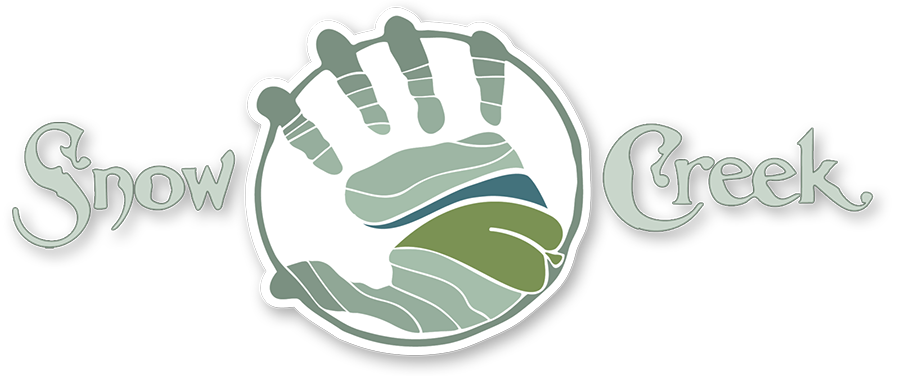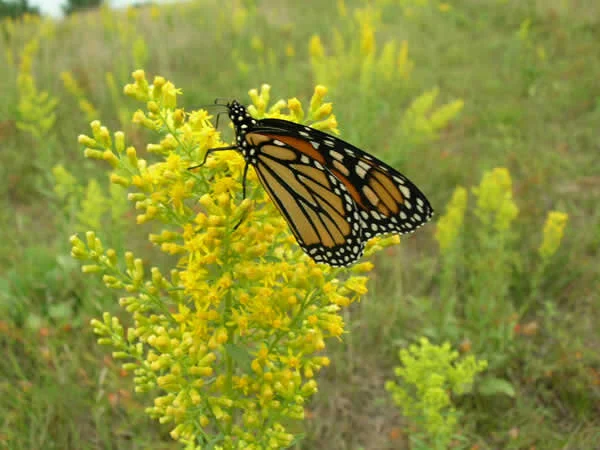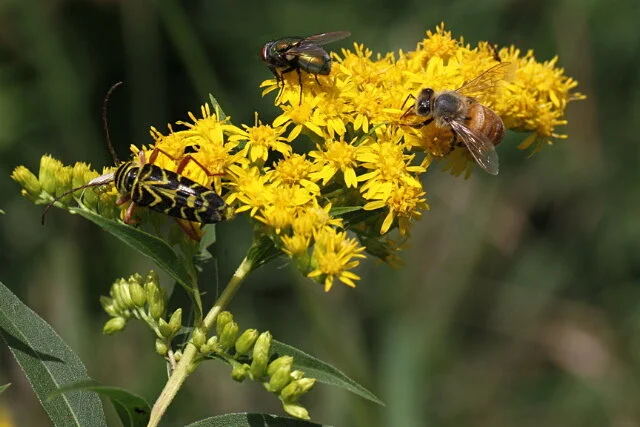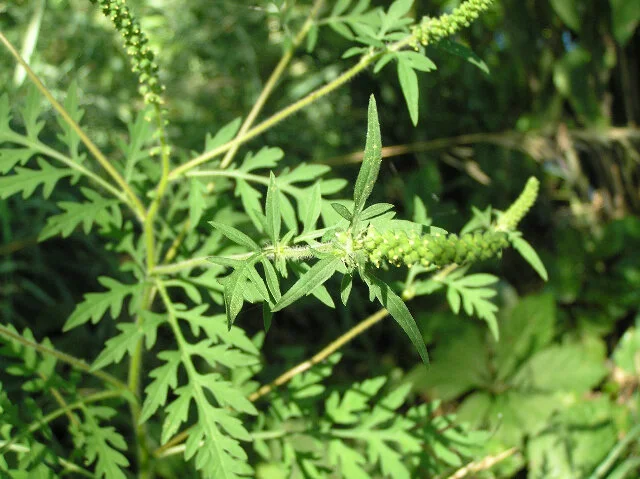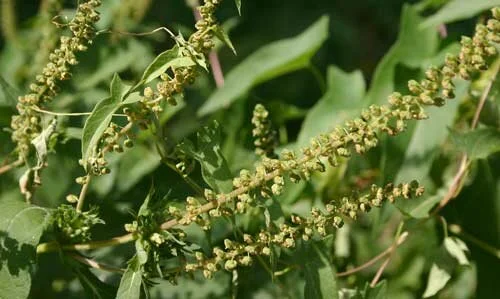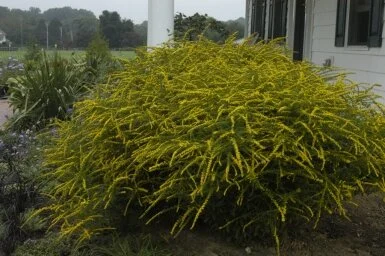Goldenrod – A Scapegoat
Solidago speciosa (Showey Goldenrod) and Monarch butterfly – Prairie Moon Nursery
Goldenrod does not cause hay-fever.
Since goldenrod (Solidago sp.) blooms at the same time as ragweed, it is often blamed for the allergies that millions of people suffer from in the fall. Goldenrod has heavy pollen that cannot become airborne, but is dependent on insects to carry it from flower to flower. If you want to get an idea of the number and variety of wasps, bees, beetles and bugs that reside in your area, go to the nearest goldenrod patch and sit for a spell – this member of the Aster family is a magnet for insects. You’ll find many foliage-eating bugs and beetles, leaf-mining larvae, nectar and pollen feeders, and flower and seed-eaters. In addition, many predatory spiders (jumping and crab, especially) and insects (ambush bugs, ladybug beetles, flower bugs etc.) have discovered that goldenrod is a goldmine for them, as well. Researchers have found nearly 250 species of insects feeding on one species of goldenrod (Solidago canadensis).
Pictured from left to right are a long-horned beetle (locust borer, Megacyllene robiniae – pollen eater), a fly (nectar feeder) and bee (nectar and pollen feeder).- Mary Holland
This is ragweed:
These are its flowers:
Common ragweed (Ambrosia artemisiifolia)
The flowers are so small on ragweed, few insects visit them, so it depends on its billions of airborne pollen granules to reproduce. This pollen is what causes the common allergic reaction.
Since ragweed is an annual, it can be best controlled by cutting it down before it has a chance to flower and seed. If a small area needs to be cleared of it, the plants can be pulled up, root and all, by hand. Larger areas need more aggressive control, with weed eaters and mowers.
Solidago canadensis ‘Fireworks’ – Mt. Cuba
While goldenrod is lovely to look at in naturalized areas, a cultivar called, ‘Fireworks’ is a very nice addition to gardens. It has a clump forming habit with sprays of yellow flowers from late summer into early fall. It looks beautiful with blue salvias, anemones, and native sunflowers and grasses. Retrain yourself to see the beneficial attributes of goldenrod. It has a lot to offer.
